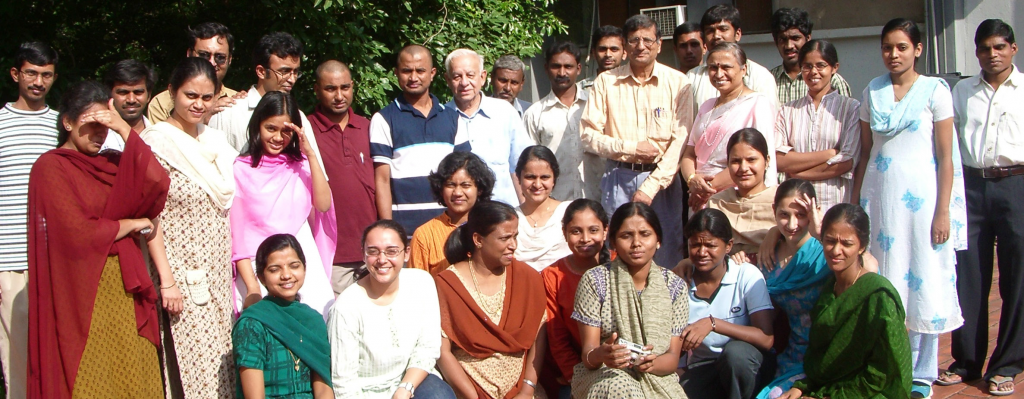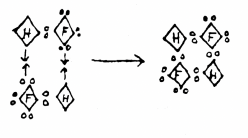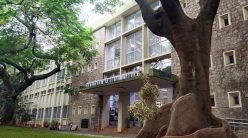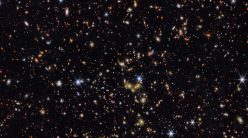HS Savithri graduated with a PhD from the Department of Biochemistry in 1976. After a short stint abroad, she returned to the same department, where she worked on the architecture, genome organisation and expression of plant viruses, before becoming the first and only woman to be Chair of the department. On the occasion of the department’s centenary, she penned her reminiscences – an edited version of which is reproduced here.
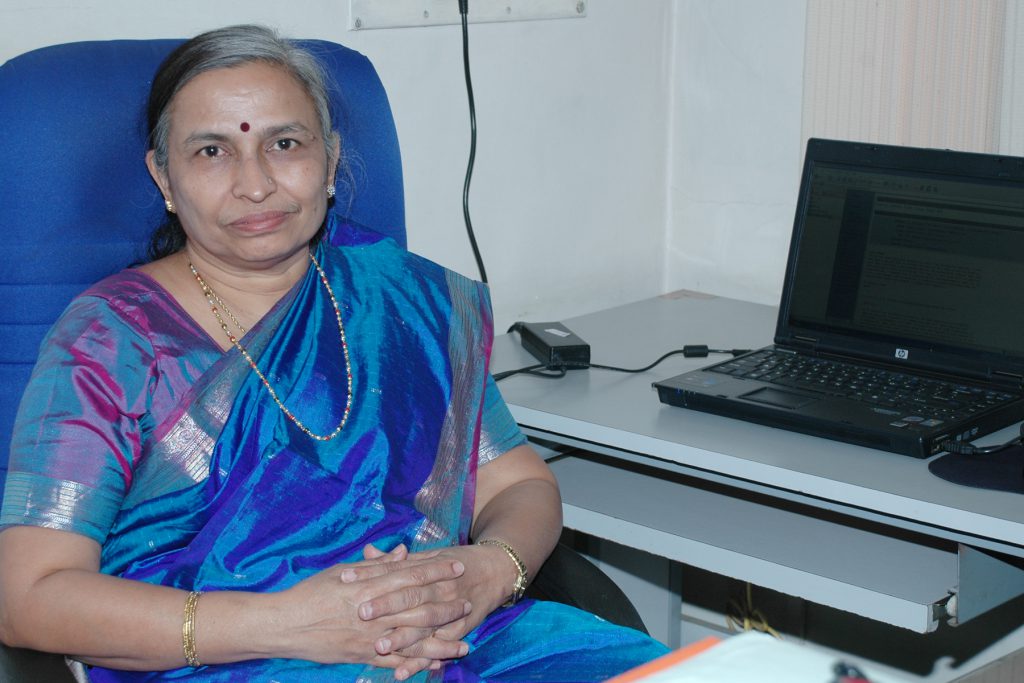
After completing an MSc degree in Chemistry from Central College, Bangalore, about six of us joined the Department of Biochemistry in the year 1972. Prof N Appaji Rao was assigned as my research supervisor. This was a turning point in my career. I was fortunate to work with a distinguished enzymologist and a rare human being who made us all emulate his generosity, kindness to colleagues and passion for science.
My first experiment in the lab was to measure the activity of the enzyme aspartate transcarbomylase from mungbean seedlings. In fact, the very first assay I set up worked and I could show that the crude extract had activity. I was told that someone else had tried to establish the assay conditions for several months and had failed. This was beginner’s luck!
It took me almost two years to standardise the purification protocol for this enzyme; it was difficult to purify plant enzymes by classical methods. I then began work on establishing the kinetic and regulatory mechanism of this enzyme. The purified enzyme would lose activity in less than 24 hours. The experiments had to be planned well before the enzyme was ready and executed without any delay. Since the yield of the enzyme was very low, I could use it only for activity measurements. Whenever I showed any data to Prof Rao, the first thing he would ask was, “Did you repeat the experiments?” This is indeed crucial in any experimental work.
Many of us used to have lunch together in the lab at a large table called the sweets table where we enjoyed celebrating every small event: a first paper, a birthday, someone joining the group or returning from home after a break. Even now, this legacy has continued in my lab.
There was a lot of self-learning to do and we used to go to the library every week to look at the new journals that arrived. There used to be a competition to see who would go there first – GP [G Padmanaban] or us – and invariably GP won! That culture has completely changed now, thanks to Google.
Many of us used to have lunch together in the lab at a large table called the sweets table where we enjoyed celebrating every small event
All of us used to go to a person called Sheshadri in Malleswaram for typing our theses and stencil cutting. He used to be very busy and would allot only two hours per day for each of us. We had to go through the handwritten draft very carefully as he would not repeat typing any page. His English was very good and he would make corrections by himself if there were any mistakes. For figures, we used to get them drawn by an artist on tracing paper and get ammonia prints. All these things are obsolete now.
After returning from an 18-month sabbatical in Japan, Prof Rao looked at the data I had generated and said that I could start writing my thesis. By that time, I was married to MRN Murthy [also an IISc alumnus], and he helped me analyse the data by writing a program that could estimate the kinetic constants accurately.
I submitted my thesis on 9 December 1976, and my son was born on 20 December.
Plant virology at Purdue
I worked as a postdoctoral fellow for a while and then we left for Purdue University in the US. There, I worked with Prof A Light from the Department of Chemistry and Murthy joined Prof Michael Rossmann’s lab in the Department of Biological Sciences.
Four years later, we met Prof Ramaseshan, the then Deputy Director of IISc, at the International Union of Crystallography meeting in Canada. He verbally promised both of us permanent positions if we returned, and suggested that we should start work on virus crystallography in India – a highly ambitious proposition with no facilities. That was enough for us to decide to return. But before that, we wanted to identify a good problem.
Murthy and I went through the literature and realised that most of the work on plant viruses in India was done in plant pathology labs on epidemiology and disease control, with very little molecular characterisation. I moved to Prof Rossmann’s lab to learn molecular virology. I worked with Dr John Erickson, and in less than three months we could get a paper in Virology on the assembly of the southern bean mosaic virus.
Murthy and I also took a course in plant molecular virology offered by Profs Lister and Jackson which really laid the foundation for future plant virus research in our labs. We decided to start work on a virus which was characterised reasonably well so that we could proceed with the structural work as soon as we returned.
Back to Biochemistry
At IISc, Murthy joined the Department of Physics as a Senior Research Fellow and then moved to the Molecular Biophysics Unit. I started to work as a CSIR pool officer with Prof Appaji Rao who very willingly accepted me into his lab once again. My job was to interact with and guide his students in addition to my own work that I initiated on plant viruses. I also had the task of mentoring short-term students from SV University. Some students who had already completed four years were desperate to get some data; we used to sit down together almost every day, and design experiments carefully and execute them.
One such student had come from Delhi. One day I asked him, “Did you have lunch?” He said, “No, since I do not have a fellowship, I do not want to ask my parents to give me money. I will go home and eat.” This meant that he would fast during the day. Murthy and I used to get lunch from home and we shared with him the food that my mother-in-law generously packed for all three of us. This helped the student open up to me and together we designed activity-based experiments on the enzyme he was working with. He managed to get all the data required for his thesis submission in less than a year.
There was another student who, at the tail end of his work, somehow lost interest and would not complete the work and write his thesis. Prof Appaji Rao and Prof AN Radhakrishnan played a major role in bringing him back to normal. They used to pick him up from his room and bring him to the lab. I used to gently nudge him to finish the work. In the end, he submitted his thesis, got two very good papers published, went abroad and has done very well. These students really taught me how to be patient.
Prof Appaji Rao was generous enough to grant two of his students to me under joint supervision even before I was a faculty member. We also had a lot of goodwill from Prof Rao’s former students who sent us chemicals required from time to time.
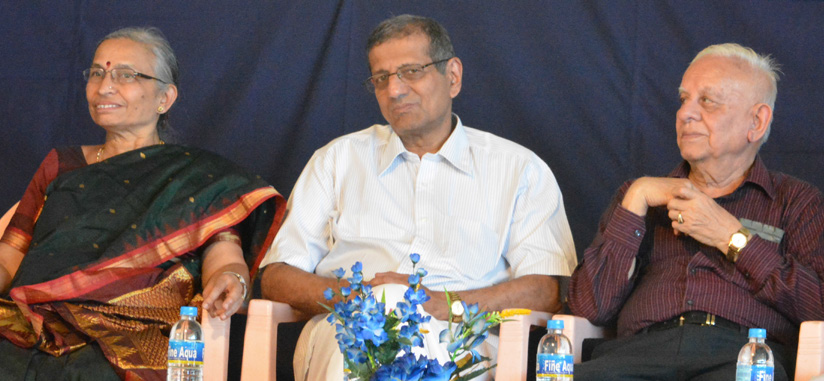
Faculty and Chair
Seven years after I returned from abroad, I was offered a faculty position in the Department of Biochemistry. I was told not to ask for a separate lab but work with Prof Appaji Rao. This, in a way, turned out to be a blessing in disguise as I could use his lab facilities and add to them from my own grants. All his students became my students and vice versa. Similarly, all of Murthy’s students were part of our lab and our students were part of his lab. We were one large family! The students had the unique opportunity to interact with all three of us.
I was lucky to have a large number of motivated students from whom I learnt more than what I taught them. Each one was different from the other and I have enjoyed mentoring them. Since we had a common lab, the students had to learn to share and work together. The senior students set the standards high and the juniors simply had to follow them. Once we had three students who had joined in the same year, and five years later, all of them had to go on pension. I had only one project assistant position available. I told them that one of them could take it and share the salary. Immediately they said that the position should go to the one who needed the money the most, and that the other two did not want any share in the salary.
When I joined as a faculty member, I was the only woman amongst 20-odd male faculty members who were quite aggressive and held diametrically opposite views. It took a lot of effort to make sure that my voice was also heard.
However, the department as such was highly congenial for doing research and my students could access not only the departmental facilities but also the facilities from individual faculty labs with or without the knowledge of the faculty member. Even now that tradition of sharing has continued in the department; students, postdocs and short-term workers from other departments and institutions come and use our facilities freely.
I was fortunate to be the first woman to become Chair of this great department. There were a lot of challenges, but the faculty members and the administrative staff of the department extended their full support. During my tenure as the Chair, we moved from the old building to the new building. It was indeed a mammoth exercise carried out with the complete cooperation of students and all the members of the department.
I have enjoyed working every single day at the department and I am proud to be a part of its centenary celebrations.
